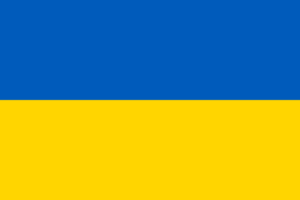It’s been a while since I’ve written about Ukraine. The last time I mentioned the conflict was in my coverage of a Christie sale in London back in July featuring a large Jeff Koons sculpture. The sculpture’s seller, the Ukrainian billionaire Victor Pinchuk, announced his intentions to give all proceeds towards medical supplies for those affected by the war, which amounted to £8.6M / $10.5M (or £10.14M / $12.39M w/p). Previously, I’ve written about western art institutions reevaluating their relationships with Russia, as well as the destruction of Ukrainian museums by invading Russian soldiers. But now it seems the tide is turning slightly with a Ukrainian counteroffensive reclaiming occupied territories in the country’s east. So I think an update is due, especially with all the stuff going on in the past few months.
On September 30th, Vladimir Putin signed several decrees through which Russia annexed four Ukrainian provinces. Combined, these lands comprise 15% of Ukrainian territory and contain nearly a quarter of the country’s population. These annexations have gone completely unrecognized by the international community, but that will not stop Russian forces from doing as they please in the region. These regions are home to dozens of museums and cultural centers, whose collections are now in danger of being looted or destroyed since the Ukrainian culture ministry deems there is insufficient time to evacuate the collections elsewhere. At some of these museums, Russian security forces have already installed new directors and staff, likely to make theft, appropriation, and destruction easier. Because of this and many other reasons, one of Russia’s most important arts figures has resigned in protest. For twenty-two years, Dimitri Ozerkov served as head of contemporary art at the Hermitage Museum in St. Petersburg, one of the largest, most-visited museums in the world. His last straw was seeing the museum’s director openly praise and support Putin. He tendered his resignation and quickly left the country.
The war has already destroyed much of the art in those regions. The siege of Mariupol, one of Ukraine’s largest cities, lasted nearly three months before falling to Russian forces. Entire museums, some dedicated to the memory of single artists, were completely destroyed in the process. The occupied regions, like the province of Luhansk, are home to sacred statues known as stone babas, created by a nomadic Turkic people called the Polovtsians. Many date as far back as the ninth century CE and have been compared to the Moai statues of Easter Island. After Ukrainian forces liberated the city of Izyum, they found many of the area’s stone babas had been destroyed. Appropriately, the International Council of Museums (ICOM) set up an Emergency Red List for artworks and cultural artifacts at risk of being looted or destroyed. This is so authorities can act in case they appear on the market elsewhere. Some art historians have likened these cultural crimes to the Taliban’s destruction of Buddha statues in Afghanistan, or the Islamic State’s destruction of Roman ruins in Syria. It’s the same motivation behind the cultural loot and destruction perpetrated by the Nazis during the Second World War. This is summed up pretty well by Taras Voznyak, the director of the Lviv National Gallery: “Putin knows that without art, without our history, Ukraine will have a weaker identity.”

